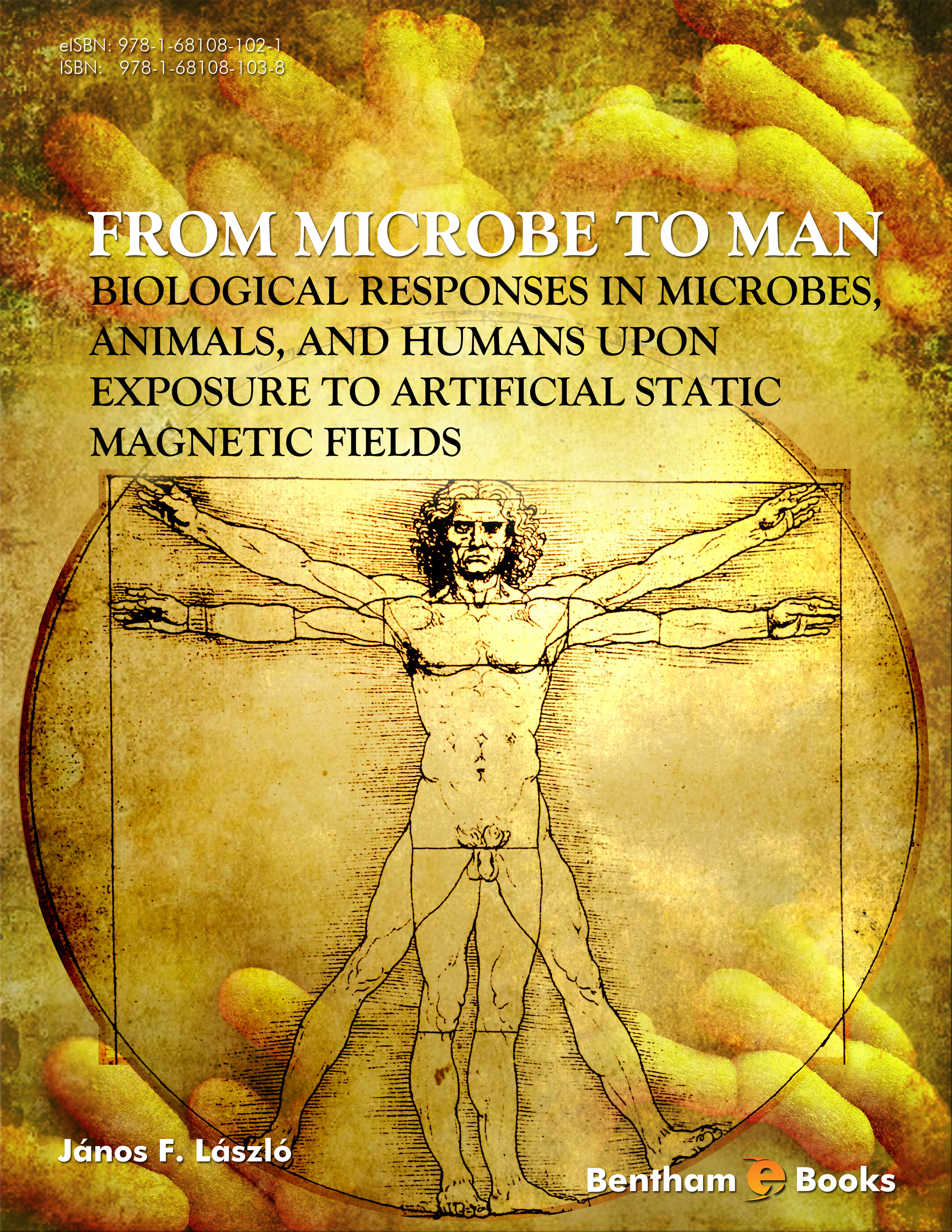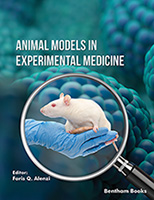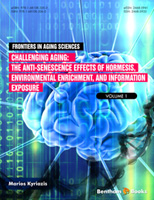I am fully aware of the risk I undertook when, accepting the challenge; I decided to write this
book. The challenge appeared in a crystal clear form of a kind request from Bentham Science. This
very distinguished publishing company expressed their feeling that my experience with static magnetic
fields (SMF) may be of interest to a broader audience. I hope they were right…
I spent almost 2 decades in the research field of controlled thermonuclear fusion, while being
employed at the Technical University of Budapest, Hungary. Stellarators use very complex external
SMF to keep the plasma focused inside the vacuum vessel. When facing the problem of
SMF-exposure on living organisms, I felt predestined to contribute to this unique and challenging
exploration.
What do I mean when I say I undertook some risk? The effect of SMF-exposure on living
tissues is namely like sport. Few have adequate knowledge about it, while many have opinion or
prejudice. It is also not widely acknowledged that in the past 60 years, parallel with the discovery
and development of nuclear magnetic resonance spectroscopy (NMRS) and its entry to medical
diagnosis (as magnetic resonance imaging or MRI), serious research has been done resulting in 7
Nobel Prize winners. This made it all the more important to clarify whether the result of the diagnosis
of MRI would have a correlation with the SMF-exposure itself. Let us immediately clear
some points:
-
An SMF exists that has a clinically significant analgesic and anti-inflammatory effect, this response relies in the biology of the subject itself mobilizing its own defense systems in
overcoming pathological conditions.
Taking risks happens when strong motivation is at hand. I happen to have several. I wrote
this book, because (i) I wanted to overview what we have done in the past 7 years in a concise
form, (ii) I want to encourage fellow scientists to join us and share our efforts and victories, (iii) I
am looking for sponsors who would provide sources for research but leave research independent.
I am often asked by laypeople as well as professionals whether this or that jewelry, band,
mattress, pillow, or disk including permanent magnets, available in the market would really “act” as
pain-killer or anti-inflammatory device. Well, my best answer to that query is “I don’t know. They
may.” My experience tells me that there are some arrangements, structures of permanent magnets
that exert measurable (patho)physiological effects when living tissues are exposed to it. Such arrangements
are discussed in this book, which makes up for the evidence-based part of it. The scientifically
non-evaluated and/or non-reproducible experiments with other arrangements “may still
act”. They certainly “act” at the psychosomatic level. The placebo effect induced by magnetic fields
can rise up to 60%. Is this good or bad news? Placebo effect itself has a good reputation and an
evidence-based foundation in medicine, and serves as one of the most effective therapeutical strategies
in otherwise unmanageable diseases. It is inexpensive, it acts immediately, and it can have a
long lasting beneficial effect. However, placebo also has side effects. Unfortunately, there's no such
thing as a free lunch.
A well-founded hope is slowly evolving that we might create a method for analgesia and anti-
inflammation that is at least as effective as conservative options but may have fewer side effects
and interactions.
Is it really a surprise for the respected Reader that static magnetic fields (SMF) can affect a
living object? An ever increasing annual number of publications reporting about evidence-based
medical research prove that living objects respond to external magnetic fields in a wide range of
frequencies. These results are briefly reviewed in the preliminaries of the chapters. However, I feel
encouraged to concentrate on our own studies which provide the first pieces of evidence in some fundamental aspects of research that exposure to an external, artificial SMF can induce or assist
certain (patho)physiological effects.
This book basically covers all phases of studies regarding the effect of SMF-exposure on living
matters starting from in vitro assays, through in vivo experimental tests, ending with human trials.
In the beginning, though, I must be a little more technical in order to introduce the fundamental
steps of medical device development to the Reader. Most of the developmental steps follow the
rule: The stronger, the longer lasting, and the more prompt the beneficial response to SMFexposure
compared to sham-exposure, the further we got with the optimization of the SMFproducing
generator.
In all honesty, I must admit that not all experiments provided evidence for the beneficial effect
of SMF-exposure on the specific biological response tested. Even if a positive response was
found, we were not always convinced that it was the exclusive action of SMF-exposure. Therefore,
we had to differentiate between several options to the best of our knowledge.
-
Is there really no effect that can be measured?
-
Would there be an effect if we chose a more appropriate model?
-
Can we still miss observability of an effect in a perfect model by superficial execution?
These are concerns probably every researcher must deal with. However, we have never encountered
a situation in which the exposure in the applied magnetic induction range and the applied
short periods of time would have caused negative (that is harmful) main or side effects.
Although the viability of a number of healthy microorganisms was tested in vitro, human
lymphocytes and macrophages resulted in more interesting insight when SMF-exposure followed
gamma-irradiation or lipopolysaccharide-activation. The Reader will soon realize that we spent
most of our time with in vivo experimental research. The reason for this is that these tests have
provided the most positive results; consequently, they were more applicable for device development.
Within in vivo animal tests, we selected pain models in invertebrates and also in mammals,
further divided into acute and chronic pain models, inflammation tests is mammals, as well as an
allergy test. The human trials presented here must be considered incidental; nevertheless, they still
open up new vistas of future research and development.
I am personally proud to have succeeded in getting a little beyond the level of phenomenology
by revealing some of the possible background mechanisms in action. It seems obvious today
that a living object that has self-motion in an external SMF is subject to an induced timedependent
magnetic flux and, consequently, to internal electric potential differences; however, the
point whether these changes can be scientifically measured in the biological response is still open
for discussion. A model is presented to physically correctly simulate and thus assess the generated
magnetic potentials in rodents that move in an inhomogeneous SMF within geometric restraints.
When designing a model to test SMF-exposure, the first consideration, contrary to therapy,
is (i) to expect a positive result. This condition was unfortunately very effective in limiting the
number of models. (ii) Science in general must advance Based on experimental results; such results
have either not yet existed or if existed, were ambiguous. (iii) The result should have a clinical relevance.
Other factors that have also played a restricting role were (iv) time- and budget-restrictions.
(v) Also, a laboratory should be picked for the measurement that has a traditional practice in the
field of the model. This choice provided further advantages: The experience in the lab furnished us
with immediately comparable results to those achieved with other (mostly chemical) agents in the
same model. (vi) We started with in vitro and in vivo measurements where the role of placebo (and
other psychosomatic) effects could be minimized. (vii) We always aimed at (but were not always
successful in) repeating the experiment in another laboratory in order to check reproducibility.
Another important point in the choice of experiment was the (viii) level of hospitality of the host
institute for a new and important research field. I have astonishingly positive experiences with this
latter factor.
Research in the field of SMF-induced or -assisted biological responses is a rather new, but
very important and promising field with high expectations from both the research society as well as
the average man. On one side of the topic is the knowledge we can gain from natural sciences: The
method of nuclear core and electron resonance, the spectroscopy methods of molecular, even
atomic resolution, and the quantum mechanics describing their operation. On the other side there
is the knowledge we obtain from life sciences, where explanation is given on the level of receptors
and enzymes. The imaginary tunnel of scientific cognition is bored from both sides. Although we
are unfortunately far from joining the 2 bores, the present book hopefully serves as a step from the
direction of receptors toward magnetic spins.
The manuscript of this book is based on materials published in 2 book chapters:
Series in Mathematics and Life Sciences 1 (Antoniouk AV, Melnik RVN Eds.), De Gruyter, Berlin,
Germany, 2013, pp. 247-275.
Recent Developments in Brain Research 1 (Pandalai SG Ed.), Research Signpost, Kerala, India,
2012, pp. 1-43.
and in the following papers (in anti-chronologic order and alphabetic order of journal name within):
| Authors |
Article title |
External reference |
Year |
Reference page number in this book |
Publisher |
| Kiss B, Gyires K, Kellermayer M, László JF |
Lateral gradients significantly enhance static magnetic field-induced inhibition of pain responses in mice a double blind experimental study |
Bioelectromagnetics 34:385-396 |
2013 |
83, 101 |
Wiley |
| Mészáros Sz,
Tabák AG,
Horváth Cs,
Szathmári M,
László JF |
Influence of local exposure to static magnetic field on pain perception and bone turnover of osteoporotic patients with vertebral deformity a randomized controlled trial |
International Journal of Radiation Biology 89:877-885 |
207 |
Informa Healthcare |
| Vergallo C, Dini L,
Szamosvölgyi Zs,
Tenuzzo BA,
Carata E,
Panzarini E,
László JF |
In vitro analysis of the antiinflammatory effect of inhomogeneous static magnetic field-exposure on human macrophages and lymphocytes |
PLOS ONE 8:e72374 |
165 |
PLOS |
| László JF, Hernádi
L |
Whole body static magnetic field exposure increases thermal nociceptive threshold in the snail, Helix pomatia
|
Acta Biologica Hungarica 63:441-452 |
2012 |
55 |
Akad miai |
| László JF, Farkas
P, Reiczigel J,
Vágó P |
Effect of local exposure to inhomogeneous static magnetic field on stomatological pain sensation a double-blind, randomized, placebocontrolled study |
International Journal of Radiation Biology 88:430-438 |
197 |
Informa Healthcare |
| László JF,
Pórszász R |
Exposure to static magnetic field delays induced preterm birth occurrence in mice |
American Journal of Obstetrics and Gynecology 205(4):362.e26-e31 |
2011 |
147 |
Elsevier |
| László JF, Szilvási, Fényi A, Szalai A, Gyires K, P rsz sz R |
Daily exposure to inhomogeneous static magnetic field significantly reduces blood glucose level in diabetic mice |
International Journal of Radiation Biology 87:36-45 |
135 |
Informa Healthcare |
| Kovács-Bálint Zs,
Csathó Á, László
JF, Juhász P,
Hernádi I |
Exposure to an inhomogeneous static magnetic field increases thermal pain threshold in healthy human volunteers |
Bioelectromagnetics 32:131-139 |
179 |
Wiley |
| László J, Kutasi J |
Static magnetic field exposure fails to affect the viability of different bacteria strains |
Bioelectromagnetics 31:220-225 |
2010 |
45 |
| Kubinyi Gy,
Zeitler Zs,
Thuróczy Gy,
Juhász P, Bakos J,
Sinay H, László J |
Effects of homogeneous and inhomogeneous static magnetic fields combined with gamma radiation on DNA and DNA repair |
Bioelectromagnetics 31:488-494 |
157 |
| László J, Pivec N |
Effect of inhomogeneous static magnetic field on dental pain in humans |
Clinical Journal of Pain 26:49-55 |
187 |
Wolters Kluwer |
| László JF, Gyires
K |
Analysis of inhomogeneous static magnetic field-induced antinociceptive activity in mice |
Progress in Electromagnetics Research Symposium Online 6:307-313 |
83, 101 |
PIERS Online |
| Antal M, László J |
Exposure to inhomogeneous static magnetic field ceases mechanical allodynia in neuropathic pain in mice |
Bioelectromagnetics 30:438-445 |
2009 |
127 |
Wiley |
| László J, Tímár J,
Gyarmati Zs,
Fürst Zs, Gyires
K |
Pain-inhibiting inhomogeneous static magnetic field fails to influence locomotor activity and anxiety behavior in mice: No interference between magnetic field- and morphine-treatment |
Brain Research Bulletin 79:316-321 |
67, 83 |
Elsevier |
| László J, Gyires
K |
3 T homogeneous static magnetic field of a clinical MR significantly inhibits pain in mice |
Life Sciences 84:12-17 |
95 |
| Gyires K, Zádori
ZS, Rácz B, László J |
Pharmacological analysis of inhomogeneous static magnetic field-induced antinociceptive action in the mouse |
Bioelectromagnetics 29:456-462 |
2008 |
119 |
Wiley |
| László J, Reiczigel J,
Székely L,
Gasparics A,
Bogár I, Bors L,
Rácz B, Gyires K |
Optimization of static magnetic field parameters improves analgesic effect in mice |
Bioelectromagnetics 28:615-627 |
2007 |
83 |
| Sándor K, Helyes
Zs, Gyires K, Szolcsányi J,
László J |
Static magnetic field-induced anti-nociceptive effect and the involvement of capsaicin-sensitive sensory nerves in this mechanism |
Life Sciences 81:97-102 |
75 |
Elsevier |
The Reader must be warned though that this book does not aim to summarize the complete
craftsmanship accumulated about the medical applications of SMF-exposure, neither can it reveal
all the gaps in knowledge. It certainly tries to untangle some areas that seem to be important from
the clinical viewpoint. This book is not intended to be a review even if it contains a large enough
amount of references to start a research in this field for a newcomer. It basically accounts for the
author’s own experience in life sciences during the past 7 years. Having a background in electric
engineering and a history of almost 2 decades of university physics lecturing, the biology-related
topics collected in this book come from the fresh aspect of a particular and positively skeptic “outsider”.
By definition, a person is positively skeptic if he does not believe his own eyes, but is ready
to learn, “to strive, to seek, to find, and not to yield” (from Alfred Lord Tennyson, English poet,
1809-1892). I personally take responsibility that every single statement I formulated in this book
reflects evidence provided by our own experimental data, measured in the best possible way. Although
double blinding could not always be carried out, we always strived after reproducibility.
In good faith,
János F. László
Budapest, Hungary





